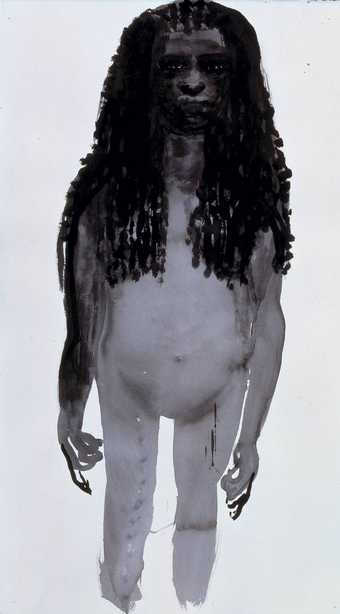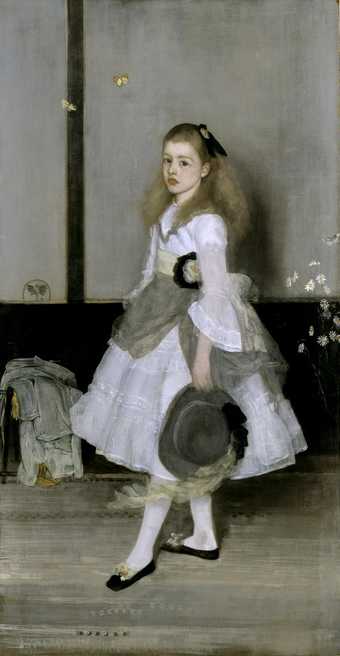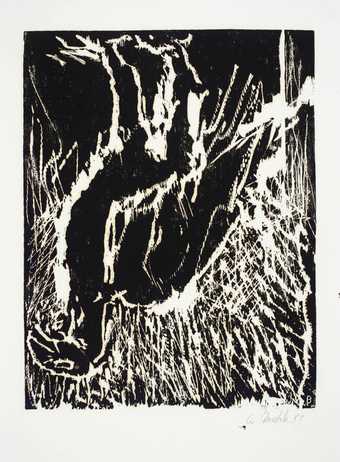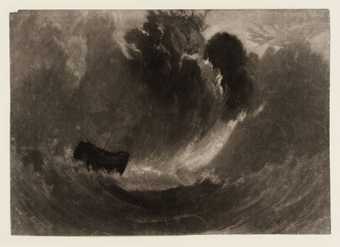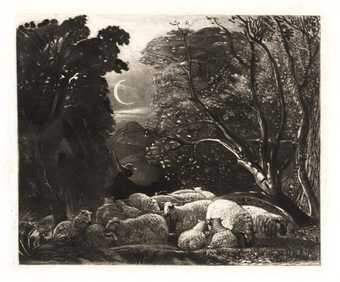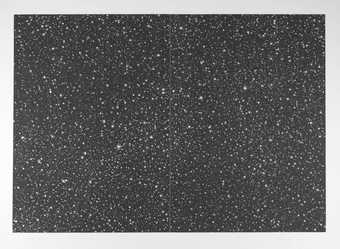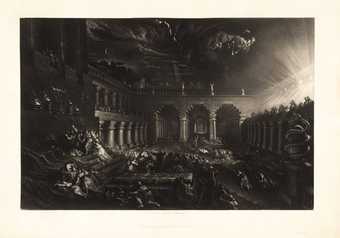
John Martin
Plate from ‘Illustrations to the Bible’: Belshazzar’s Feast
(published 1835)
Tate
The process involves indenting the metal printing plate by rocking a toothed metal tool across the surface. Each pit holds ink, and if printed at this stage the image would be solid black. However the printmaker creates dark and light tones by gradually rubbing down or burnishing the rough surface to various degrees of smoothness to reduce the ink-holding capacity of areas of the plate.
The technique became particularly popular in eighteenth-century England for reproducing portrait paintings.


